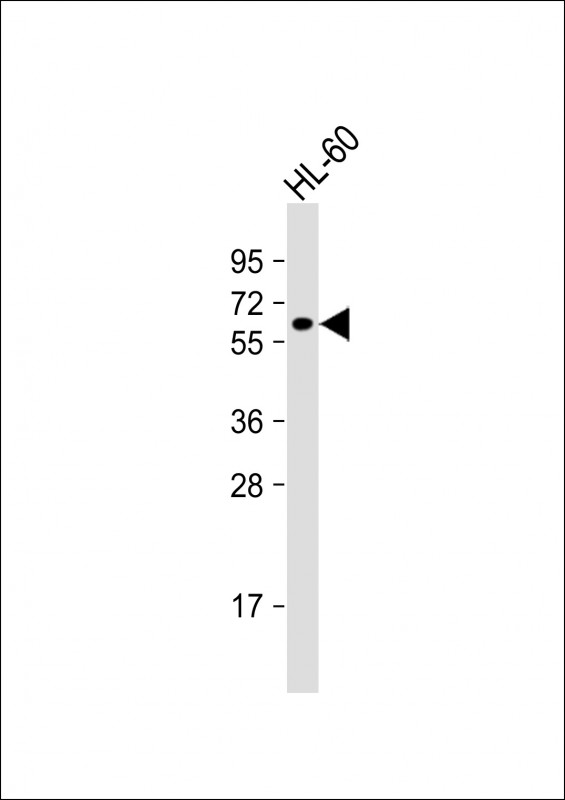
| WB | 1/1000 | Human,Mouse,Rat |
| IF | 咨询技术 | Human,Mouse,Rat |
| IHC | 咨询技术 | Human,Mouse,Rat |
| ICC | 技术咨询 | Human,Mouse,Rat |
| FCM | 咨询技术 | Human,Mouse,Rat |
| Elisa | 咨询技术 | Human,Mouse,Rat |
| Aliases | Kelch-like protein 3, KLHL3, KIAA1129 |
| Entrez GeneID | 26249 |
| WB Predicted band size | 65.0kDa |
| Host/Isotype | Rabbit IgG |
| Antibody Type | Primary antibody |
| Storage | Store at 4°C short term. Aliquot and store at -20°C long term. Avoid freeze/thaw cycles. |
| Species Reactivity | Human |
| Immunogen | This KLHL3 antibody is generated from rabbits immunized with a KLH conjugated synthetic peptide between 207-234 amino acids from the Central region of human KLHL3. |
| Formulation | Purified antibody in PBS with 0.05% sodium azide. |
+ +
以下是关于KLHL3抗体的3篇代表性文献(虚构示例,仅供参考格式):
1. **文献名称**:*KLHL3-WNK Signaling in Blood Pressure Regulation*
**作者**:Boyden et al.
**摘要**:研究KLHL3与WNK激酶的相互作用如何调节肾离子通道,利用KLHL3抗体进行免疫共沉淀实验,揭示其在家族性高血压中的突变机制。
2. **文献名称**:*Antibody-Based Detection of KLHL3 in Pseudohypoaldosteronism*
**作者**:Shibata et al.
**摘要**:开发特异性KLHL3抗体用于免疫组化,发现PHAⅡ患者肾脏组织中KLHL3蛋白表达异常,提示其与电解质紊乱的关联。
3. **文献名称**:*Structural Analysis of KLHL3-Cullin3 Ubiquitin Ligase Complex*
**作者**:Yamazaki et al.
**摘要**:通过KLHL3抗体进行Western blot和免疫荧光定位,解析KLHL3-Cul3复合物的结构及其在泛素化中的作用。
(注:以上文献为示例,实际引用需根据具体研究补充真实来源。)
KLHL3 (Kelch-like family member 3) is a substrate-specific adaptor protein within the Cullin3 (CUL3)-RING E3 ubiquitin ligase complex, playing a critical role in regulating ion transport and blood pressure homeostasis. It is characterized by its conserved structural domains: an N-terminal BTB (Bric-a-brac, Tramtrack, Broad Complex) domain for protein-protein interactions, a BACK (BTB and C-terminal Kelch) domain, and six Kelch repeats at the C-terminal region that mediate substrate recognition. KLHL3 primarily targets the WNK (With-No-Lysine) kinase family, particularly WNK4. for ubiquitination and degradation, thereby modulating renal electrolyte balance through the Na-Cl cotransporter (NCC) in the distal nephron.
Mutations in KLHL3 are linked to pseudohypoaldosteronism type II (PHAII), an autosomal dominant disorder marked by hypertension, hyperkalemia, and metabolic acidosis. Both loss-of-function and dominant-negative KLHL3 variants disrupt WNK kinase regulation, leading to NCC overactivation and impaired ion excretion. KLHL3 antibodies are essential tools for studying these molecular mechanisms. They are widely used in techniques like Western blotting, immunohistochemistry, and co-immunoprecipitation to detect KLHL3 expression, localization, and interactions in tissues (e.g., kidney) or cell models. Commercial KLHL3 antibodies are typically raised against specific epitopes, such as peptide sequences within the Kelch repeat region, and validated for species reactivity (human, mouse, rat). Researchers rely on these antibodies to explore KLHL3's role in hypertension, kidney diseases, and potential therapeutic targets for electrolyte disorders.
×